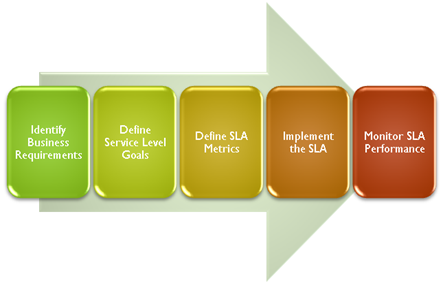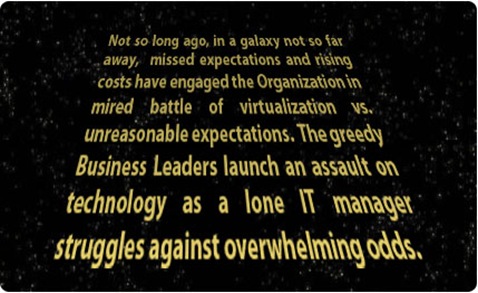This article was first published on SearchServerVirtualization.TechTarget.com.
Have you heard the one about the IT department whose goals were not well-aligned with the needs of its users? OK, so that’s probably not a very good setup for a joke. One of the most common challenges faced by most IT organizations is defining their internal customers’ requirements and delivering services based on them. In this Tip, I’ll provide details on how you can define Service Level Agreements (SLAs) and how you can use them to better manage virtualization and to reduce costs.
Agreeing to Service Level Agreements
Challenges related to deploying virtualization include skepticism related to the technology. This often reads to resistance and a lack of knowledge about the potential cost and management benefits of using virtual machines.
The purpose of a Service Level Agreement is to define, prioritize, and document the real needs of an organization. All too often, IT departments tend to work in a relatively vacuum, focusing on technology. The area of virtualization is no exception – it’s often much easier to create and deploy VMs than it is to determine the strategic needs of the company. The problems range from poorly managing users’ expectations to large costs that might not directly address the most important challenges. The goal of containing costs is the basis for a lot of virtualization decisions, so it’s important to keep this in mind.
When developing SLAs, the most important aspect is for the process to be a team effort. Managers, IT staff, and end-users should all have input into the process. Typical steps in the process are shown in Figure 1.

Figure 1: Steps in the process of creating a new SLA
Defining SLA Goals and Metrics
SLA goals define the targeted levels of service that are to be expected from IT departments. Metrics are the specific statistics and data that must be measured to ensure that the levels are being met. Some examples might include:
- Deployment: The time it takes to provision a new VM
- Performance: Ensuring adequate application and service response times
- Availability: Verifying virtual machine uptime
- Change Management: Efficiently managing VM configuration updates
A well-defined SLA should include details about how the quality of the service is measured. For example, the goal for the uptime of a particular VM might be 99.9%. This can be measured using standard enterprise monitoring tools. Or, the deployment goal for a standard configuration of a virtual machine might be 4 business hours from the time of the request.
Reducing Costs with SLAs
If you haven’t yet created SLAs, you might be thinking about the time and effort that it will take to setup and track the associated metrics. While there is certainly a cost to be paid for creating SLAs, there can also be numerous benefits. One important aspect is that areas for improvement can easily be identified. For example, if a business finds that it could improve its operations by more quickly deploying VMs, an investment in automation could help. Table 1 provides that and some other hypothetical examples.

Table 1: Examples of potential cost savings based on automation
Summary
IT organizations that constantly find themselves trying to keep up with virtualization-related requirements can benefit by creating SLAs. When done properly, this will help technical initiatives (such as VM deployments and server consolidations) stay in line with users’ expectations. Overall, this can help the entire organization make better decisions about the importance of virtual infrastructures.











